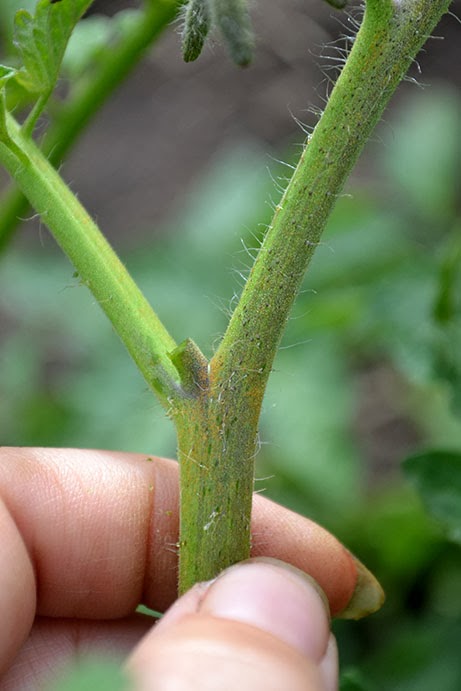I never keep on top of them as well as I could. But this year was the 'Grow Perfect Tomatoes' Challenge. With a little help from my trusty side-kick Trevor, a support system was set up and the rows of tomatoes strung up by their fingertips to garden twine. The reasoning behind pruning tomatoes is to grow smaller yields of bigger tomatoes in not a lot of space. None of that sprawling everywhere, letting the slugs in and some rotting at the very dark bottom of the mass.
I've planted 150 heirloom tomatoes this year. The varieties; Camp Joy, Brandywine, German Gold, Gold Dust, Black Cherry, Olomovic, Longkeeper, Roma and something we call Geeveston Special after a friend gave us wonderful tomatoes from the garden and we saved the seed.
The goal with pruning tomatoes is to create one central plant stem that will continue to grow and throw out flowering side shoots as it is trained taller and taller. However new tomato shoots form in the apex of the main stem and leaf growth, and if left it will go off and form additional stems and tomatoes. However, when the goal is to create one main stem only they need to be nipped in the bud.
It's best to start as soon as the plant starts growing. You don't want it expending lots of energy on shoots that will ultimately be nipped out. In the images below you can clearly see one of the side shoots, the middle image is nipping it out.
A close up of the same process.
There is one tip you never want to nip out, your main stems top shoot.
As a rule of thumb never nip out any shoots above the last set of flowers.
You'll soon get to recognise the growing shoot, it's the one you'll be winding garden twine around
(rather than wrapping the tomato around it as tomato plants are quite brittle).
Every 7 - 10 days you'll need to check for more side shoots,
and continue to wind the string around your tomato to support its weight as it grows.















